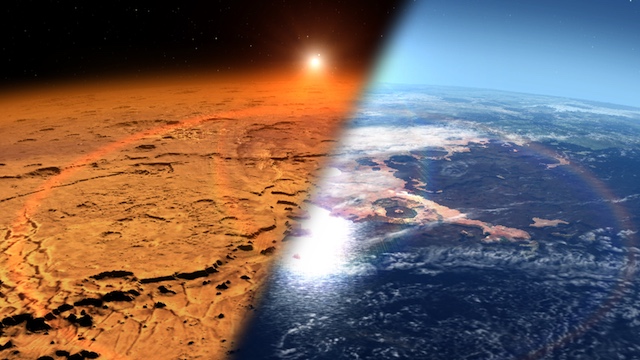 A key tracer used to estimate how much atmosphere Mars lost can change depending on the time of day and the surface temperature on the Red Planet, according to new observations by NASA-funded scientists. Previous measurements of this tracer – isotopes of oxygen – have disagreed significantly. An accurate measurement of this tracer is important to estimate how much atmosphere Mars once had before it was lost, which reveals whether Mars could have been habitable and what the conditions might have been like.
A key tracer used to estimate how much atmosphere Mars lost can change depending on the time of day and the surface temperature on the Red Planet, according to new observations by NASA-funded scientists. Previous measurements of this tracer – isotopes of oxygen – have disagreed significantly. An accurate measurement of this tracer is important to estimate how much atmosphere Mars once had before it was lost, which reveals whether Mars could have been habitable and what the conditions might have been like.
Mars is a cold, inhospitable desert today, but features like dry riverbeds and minerals that only form with liquid water indicate that long ago it had a thick atmosphere that retained enough heat for liquid water – a necessary ingredient for life – to flow on the surface. It appears that Mars lost much of its atmosphere over billions of years, transforming its climate from one that might have supported life into the desiccated and frozen environment of today, according to results from NASA missions such as MAVEN and Curiosity and going back to the Viking missions of 1976.
However, many mysteries about the Red Planet’s ancient atmosphere remain.
“We know Mars had more atmosphere. We know it had flowing water. We do not have a good estimate for the conditions apart from that – how Earthlike was the Mars environment? For how long?” said Timothy Livengood of the University of Maryland, College Park and NASA’s Goddard Space Flight Center in Greenbelt, Maryland. Livengood is lead author of a paper on this research published online in Icarus August 1. [More at links]








